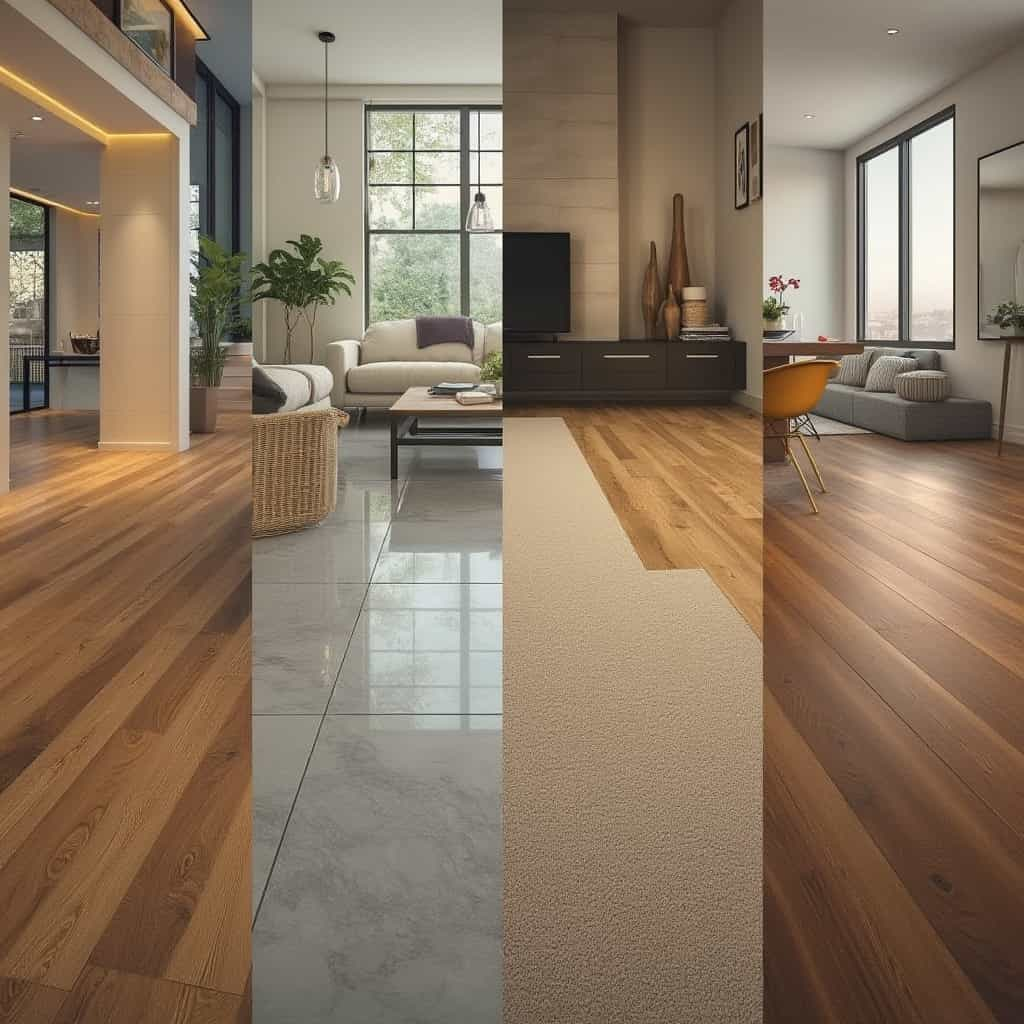When it comes to home improvement, flooring installation is one of the more noticeable investments you can make. It can significantly enhance the aesthetic value of your home and, consequently, its market value. However, given the myriad of choices available, it’s crucial to decide wisely on the right type of flooring that suits both your personal taste and practical needs. Across the spectrum, you’ll find options like hardwood, tile, vinyl, laminate, and carpet, each having its own set of pros and cons.
Hardwood flooring stands as a timeless option, well-regarded for its durability and ability to add warmth and elegance to any room. The cost, however, can be on the higher side, particularly not just for the materials themselves, but for installation as well. It’s important to note that hardwood requires periodic maintenance to maintain its luster over the years. There are primarily two types of hardwood flooring: solid and engineered. Solid hardwood is entirely made from one piece of wood, offering longevity but can be susceptible to humidity-related distortions. Engineered wood, on the other hand, consists of a veneer of real wood on top of a composite base, providing better resistance to moisture and temperature fluctuations.
Tiles are another popular choice, particularly in areas prone to moisture, like bathrooms and kitchens. Their water-resistant nature makes them a practical option. Tiles come in various materials such as ceramic, porcelain, and natural stone each bringing different traits and aesthetic value. It’s important to note that tile installation can be labor-intensive and typically requires professional services for the best outcome, affecting overall costs. Ceramic tiles are generally more affordable but might lack the durability of porcelain tiles which can endure higher foot traffic.
Vinyl flooring has surged in popularity in recent years, thanks to advancements in design technology that offer wood-look finishes, making them look as aesthetically pleasing as natural wood, at a fraction of the price. Vinyl is water-resistant and relatively simple to install, often available in peel-and-stick varieties for an easy DIY project. However, it’s not as long-lasting as other materials and could detract from a home’s value if you’re considering resale.
Laminate flooring presents itself as a cost-effective alternative to hardwood, combining durability with aesthetic appeal. It mimics the look of natural materials through a high-definition layer that can convincingly reproduce the appearance of wood or stone. Laminate is easy to maintain and install, typically locking together with a click-and-lock system that doesn’t require glue. However, it’s less forgiving against water damage and might not be suitable for frequently damp areas.
Carpet remains a favored choice for many homeowners. It’s soft, adds warmth, and is available in a multitude of colors and patterns. It’s particularly preferred in bedrooms and living rooms for the comfort it provides. The costs for carpeting can vary greatly depending on the material and style chosen. While it’s relatively cheaper to install, it does demand regular upkeep and can show signs of wear more quickly than some other materials.
Cost becomes a major consideration in flooring decisions, and it’s wise to weigh upfront expenses against long-term value. While hardwood and natural stone offer high returns on investment due to their longevity and market appeal, the initial costs can be steep. Conversely, vinyl and laminate might offer affordability but could require earlier replacement. According to home renovation experts, finding the balance between initial investment and potential future expenses is crucial.
When comparing proposals, one must be astute about the hidden costs that could arise. For instance, the removal of old carpeting or flooring can add a significant amount to the bill. Some contractors might charge for moving furniture or accommodating room fixtures like heavy appliances. It’s advisable to ask for a detailed quote that includes all possible expenses to avoid any surprise costs.
A crucial step in making the right flooring choice is understanding the specific nature of the environment the floor will be exposed to. High foot traffic areas demand resilient materials, while moisture-prone zones might benefit more from tiles or water-resistant vinyl. Assuming that one size fits all could lead to early deterioration and unwelcome expenses.
Overall, the objective is to choose a flooring option that provides beauty, durability, and comfort, while fitting within your budget. By evaluating each material against these criteria and paying close attention to your home’s specific needs, you can ensure making a wise choice that you will appreciate for years to come.
You may also like
Guide to Home Floor Renovation Options and Costs
Floor renovation can dramatically transform the aesthetic and value of a home. This article explores various flooring options, costs, and advantages, comparing them across different regions, and offering insights into selecting the best proposal for your renovation project.
Guide to Buying an Apartment in City Centers
Purchasing an apartment in the city center can be a rewarding but challenging endeavor. This article explores various proposals, costs, and benefits associated with urban real estate investment, offering insights into potential problems and options for prospective buyers.
Garden Structures: Guide to Choosing Gates and Fences
Garden structures, particularly gates and fences, play a crucial role in enhancing home aesthetics, security, and privacy. This article delves into various proposals, costs, and advantages of garden gates and fences, offering a comprehensive comparison of available options.
Garden Structures for the Home: Sheds, Gazebos and Pergolas
This article explores the diverse options for garden structures, focusing on garden sheds, gazebos, and pergolas. It examines the benefits, costs, and potential issues associated with purchasing these structures, providing a detailed comparison to help homeowners make informed decisions.
Windows and Doors: Costs and Benefits for Your Home
Choosing the right windows and doors is crucial for enhancing the aesthetic, energy efficiency, and overall value of your home. This article delves into various options available in the market, their respective costs, benefits, and provides insights on making cost-effective choices without compromising on quality.
